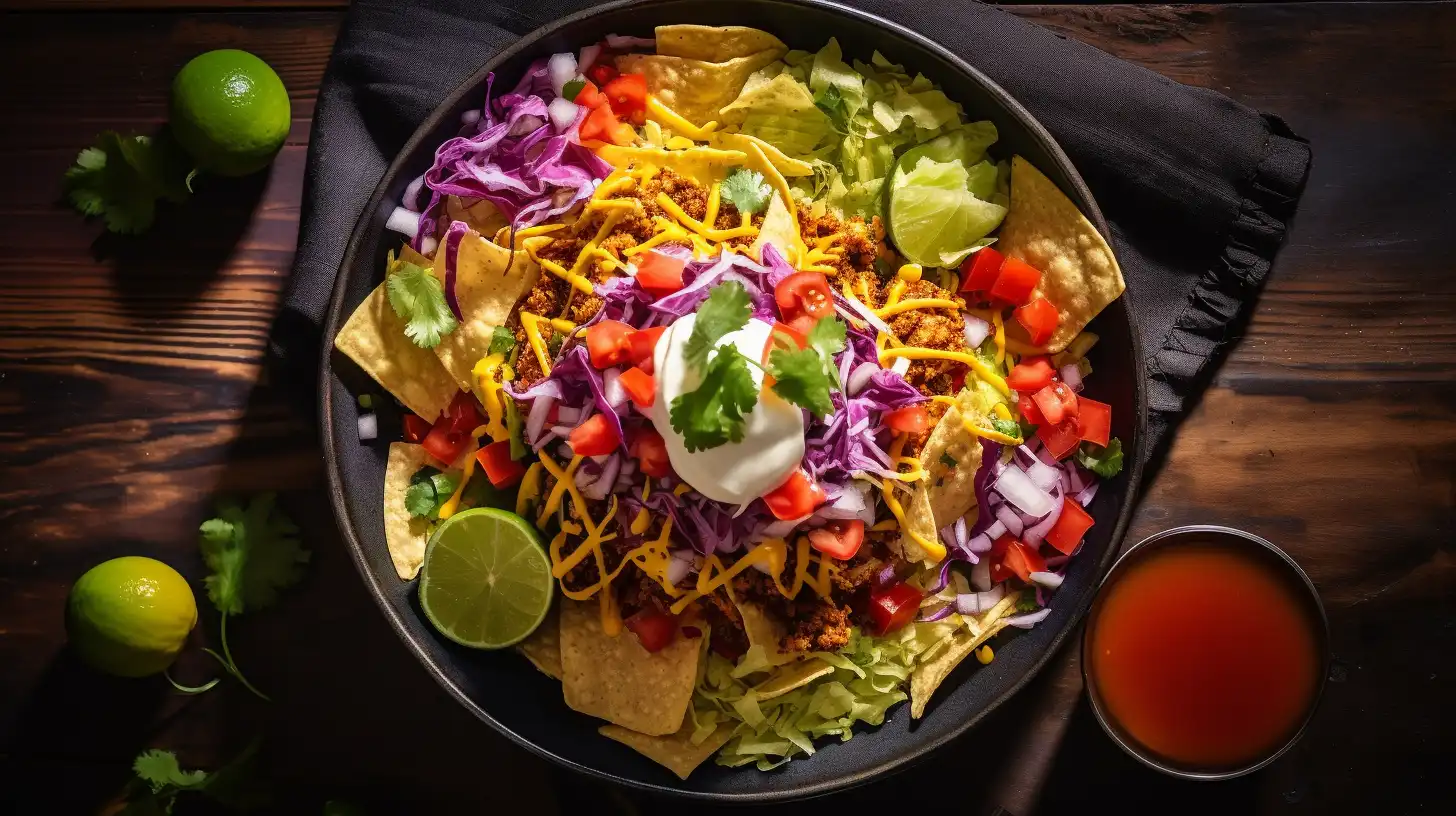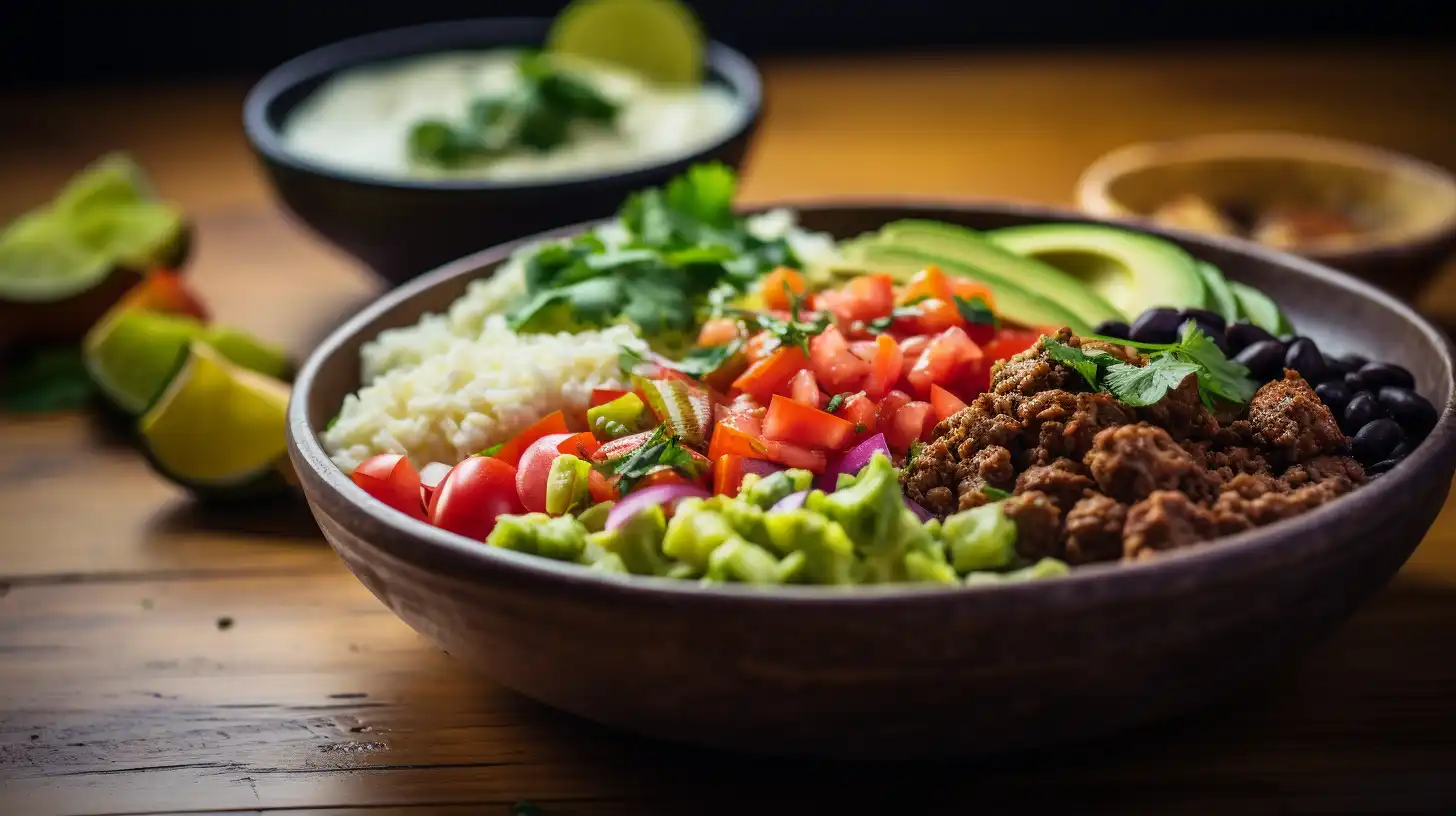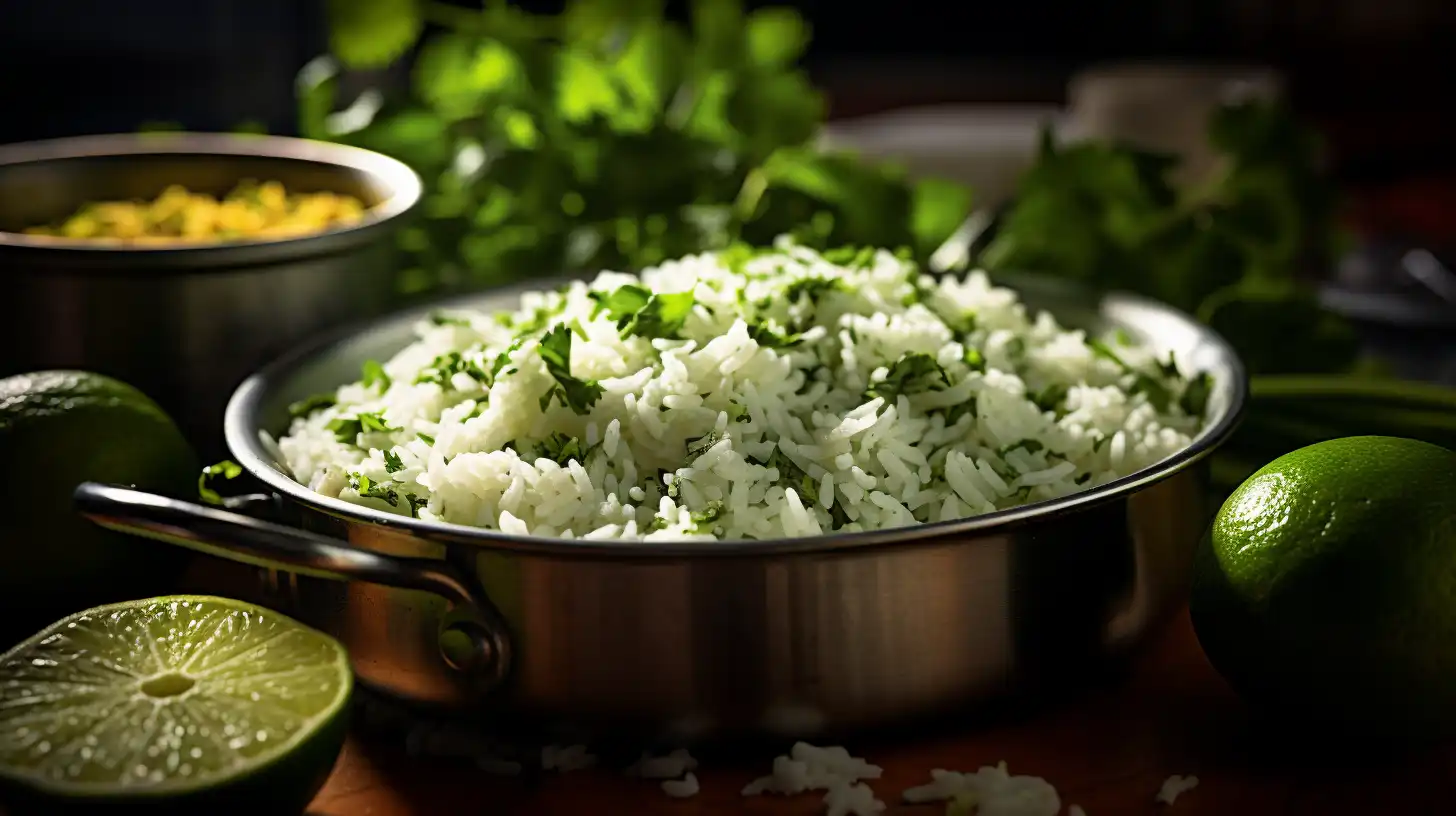The Ultimate Taco Bowl Recipe: A Step-by-Step Guide to Tex-Mex Perfection
Creating a taco bowl recipe at home is more than just following a trend—it’s about combining bold flavors, textures, and colors into a single, irresistible dish. Whether you’re a Tex-Mex enthusiast or just craving a customizable meal, this guide will take you through every step to craft the ultimate taco bowl. Packed with insights on ingredients, variations, and meal prep tips, this recipe ensures your culinary success. Let’s dive into Part 1, where we explore what makes taco bowls so special.
Understanding Taco Bowls
What is a Taco Bowl?
A taco bowl is essentially a deconstructed taco served in a bowl, bringing together all the delicious elements of a taco without the mess of holding a shell. Imagine layers of seasoned meat or protein, fluffy rice, fresh vegetables, creamy toppings, and a sprinkling of cheese—all nestled together in perfect harmony. What’s more, it’s entirely customizable!
This dish can be tailored for any dietary preference, whether you’re looking for a high-protein meal, a low-carb option, or a vegan delight. With such flexibility, it’s no wonder taco bowls have become a go-to for meal prep, quick dinners, and even party gatherings.
History and Origin of Taco Bowls
Although tacos trace their roots back to Mexico, the taco bowl is a modern Tex-Mex creation that reflects a fusion of culinary cultures. The concept likely emerged from the popular taco salad, but instead of a crispy shell, it uses a base like rice or greens to hold all the components together. This innovation not only made the dish more versatile but also turned it into a healthier option for taco lovers.
The simplicity of the taco bowl aligns perfectly with the Tex-Mex philosophy of using bold, fresh ingredients to create meals that are both satisfying and easy to prepare. By swapping out traditional taco shells for nutrient-dense bases, taco bowls appeal to a broader audience.
With these basics in mind, we’ll now move on to the essential ingredients in the next part, breaking down every layer that makes this recipe a true culinary masterpiece.
Understanding Taco Bowls
What is a Taco Bowl?
A taco bowl is more than just a meal; it’s a vibrant celebration of flavors and textures that meld beautifully in a single dish. Unlike traditional tacos, which are wrapped in a shell, taco bowls provide a deconstructed experience. This approach allows for layering hearty ingredients like seasoned meat or plant-based proteins, fluffy cilantro lime rice, black beans, and fresh veggies into one satisfying bowl.
At its core, a taco bowl is all about customization. Whether you prefer a spicy kick from jalapeños, the creamy indulgence of guacamole, or the zesty tang of fresh salsa, the options are endless. Not only are they versatile, but they’re also ideal for quick lunches, meal prepping, or dinner parties where guests can create their own bowls to suit their taste preferences.
Interestingly, the taco bowl is also a fantastic choice for those seeking healthier alternatives. By opting for brown rice, quinoa, or even lettuce as a base, you can transform this dish into a nutrient-packed meal. Additions like lean proteins, fiber-rich beans, and antioxidant-loaded toppings ensure that it’s as wholesome as it is delicious.
History and Origin of Taco Bowls
The history of the taco bowl is rooted in the evolution of Tex-Mex cuisine—a delicious blend of Mexican and American influences. While traditional tacos date back to pre-Hispanic Mexico, taco bowls are a relatively modern creation. They are believed to have been inspired by taco salads, which rose to prominence in the United States during the 1960s and 70s.
Taco salads, typically served in a fried tortilla shell, were a staple in Tex-Mex restaurants. Over time, the shell gave way to more versatile and nutritious bases like rice and greens, giving birth to the taco bowl. This shift not only made the dish more practical for everyday meals but also allowed for a broader range of ingredients and dietary adaptations.
The modern taco bowl embodies the essence of Tex-Mex innovation: bold, adaptable, and irresistibly flavorful. It reflects the ingenuity of combining traditional Mexican flavors with contemporary cooking trends to create a dish that’s equal parts convenient and delectable.
In the next part, we’ll break down the essential components of a taco bowl, from protein options to the perfect toppings, ensuring your bowl is packed with flavor and variety.
Ingredients for the Perfect Taco Bowl
Essential Components of a Taco Bowl
To create the ultimate taco bowl recipe, each component must shine. From a flavorful protein to a satisfying base and an array of toppings, every layer contributes to the dish’s vibrancy and appeal. These elements not only make taco bowls versatile but also allow you to tailor them to fit your cravings or dietary needs.
The beauty of a taco bowl lies in its simplicity—easy to prepare yet endlessly customizable. Let’s delve into the key ingredients that make a taco bowl irresistible.
Proteins: Beef, Chicken, and Vegetarian Options
The protein forms the heart of your taco bowl recipe, providing depth and richness to the dish. Here are some popular choices:
- Ground Beef: Seasoned with classic Tex-Mex spices like cumin, chili powder, and paprika, ground beef is a flavorful and quick-cooking option. Sauté it with onions and garlic for added zest.
- Shredded Chicken: Juicy and tender, shredded chicken is a versatile choice that pairs beautifully with smoky chipotle or tangy lime marinades. Slow-cook the chicken for maximum flavor.
- Vegetarian Options: For plant-based eaters, proteins like seasoned tofu, tempeh, or lentils are excellent alternatives. Black beans or pinto beans, spiced with cumin and garlic, also provide a hearty and nutritious base.
Each protein brings its own unique flavor profile, making it easy to cater to different tastes and dietary preferences.
Base Layers: Rice, Lettuce, and Alternatives
The base of a taco bowl serves as the foundation, holding all the other ingredients together. Choosing the right base can elevate your dish:
- Cilantro Lime Rice: Fluffy white or brown rice infused with fresh lime juice and chopped cilantro offers a fragrant and zesty base.
- Lettuce: For a lighter, low-carb option, opt for crunchy romaine or nutrient-rich spinach. These greens provide a fresh, crisp contrast to the other hearty ingredients.
- Quinoa: A protein-packed alternative to rice, quinoa brings a nutty flavor and fluffy texture that complements bold toppings.
- Cauliflower Rice: For a grain-free twist, try riced cauliflower seasoned with garlic and lime. It’s a great choice for those on keto or paleo diets.
Experimenting with bases allows you to balance flavors and textures, creating a dish that’s both delicious and nourishing.
Toppings: Vegetables, Cheese, and Sauces
Toppings are where a taco bowl recipe truly comes to life, adding bursts of flavor, color, and texture. Here are some must-haves:
- Vegetables: Diced tomatoes, shredded lettuce, sliced jalapeños, grilled corn, and black olives bring freshness and variety to the bowl.
- Cheese: A sprinkle of shredded cheddar, crumbled queso fresco, or tangy cotija cheese adds a creamy richness that ties the dish together.
- Sauces: Guacamole, sour cream, salsa, and a drizzle of zesty lime crema elevate the flavors of your taco bowl. Hot sauce lovers can add a dash for extra spice!
With the right balance of toppings, your taco bowl transforms into a culinary masterpiece that’s as vibrant as it is satisfying.
Next, we’ll dive into the step-by-step process of assembling a taco bowl, ensuring every bite is packed with flavor and goodness.
Step-by-Step Taco Bowl Recipe
Preparing the Protein
The protein is the star of your taco bowl recipe, so it’s crucial to get it just right. Here’s how to prepare some of the most popular options:
- Ground Beef:
In a skillet, heat a tablespoon of oil over medium heat. Add finely chopped onions and minced garlic, sautéing until fragrant. Toss in the ground beef and cook until browned, breaking it into small crumbles. Sprinkle in classic Tex-Mex seasonings such as cumin, chili powder, smoked paprika, and a pinch of oregano. For added flavor, stir in a few tablespoons of tomato paste or a splash of beef broth. Let it simmer for 5-7 minutes until rich and aromatic. - Shredded Chicken:
Poach boneless chicken breasts in a pot of salted water or chicken broth until cooked through (approximately 15-20 minutes). Once cooled, shred the chicken using two forks. In a skillet, sauté the shredded chicken with olive oil, lime juice, and a sprinkle of taco seasoning. This process infuses the meat with bold, citrusy flavors. - Vegetarian Options:
For a plant-based approach, black beans or crumbled tofu can serve as your protein. Sauté them with minced garlic, ground cumin, and a splash of lime juice for a savory base. For tofu, press out the excess water before crumbling to ensure a crisp texture.
Cooking the Base Layer
The base layer provides a sturdy and flavorful foundation for the toppings. Here’s how to prepare the most common options:
- Cilantro Lime Rice:
Cook white or brown rice according to package instructions. Once done, fluff the rice with a fork and mix in fresh lime juice, chopped cilantro, and a pinch of salt for a refreshing, zesty flavor. - Quinoa:
Rinse quinoa under cold water to remove its natural bitterness. In a saucepan, combine quinoa with water or broth (2:1 ratio) and bring to a boil. Reduce heat, cover, and simmer for 15-20 minutes. Once cooked, stir in lime zest and cilantro for a fragrant twist. - Cauliflower Rice:
Pulse cauliflower florets in a food processor until rice-sized pieces form. Sauté the cauliflower rice in a pan with olive oil, garlic, and a squeeze of lime juice for a low-carb alternative that’s packed with flavor. - Lettuce Base:
Simply wash and chop your favorite greens, such as romaine, spinach, or mixed salad greens. Pat them dry to avoid sogginess when layering the bowl.
Assembling the Taco Bowl
Now comes the fun part—putting everything together to create a visually appealing and delicious taco bowl:
- Layer the Base: Start with your chosen base, spreading it evenly across the bottom of the bowl. This will provide a solid foundation for the toppings.
- Add the Protein: Spoon the prepared protein onto the base layer, positioning it neatly to allow other components to shine.
- Pile on the Toppings: Add your favorite vegetables, such as diced tomatoes, sliced jalapeños, and grilled corn. Sprinkle shredded cheese or crumbled queso fresco for creamy goodness.
- Drizzle the Sauces: Finish with dollops of guacamole, sour cream, or a drizzle of lime crema. Don’t forget a splash of salsa or hot sauce for a spicy kick!
- Garnish and Serve: Top with fresh cilantro, lime wedges, or crushed tortilla chips for added texture and flavor.
With these steps, your taco bowl is ready to enjoy! It’s a harmonious blend of flavors and textures that will impress any palate. In the next part, we’ll explore creative variations to make your taco bowl truly unique.
Variations and Customizations
Healthy Taco Bowl Alternatives
For those looking to enjoy a nutritious twist on the classic taco bowl recipe, there are plenty of ways to make this dish lighter while keeping it flavorful:
- Low-Carb Base: Replace rice with cauliflower rice or a bed of crisp greens such as spinach or kale. These options cut down on carbs while adding nutrients.
- Lean Proteins: Opt for grilled chicken breast, turkey, or even shrimp to reduce saturated fats. For vegetarians, roasted chickpeas are a crunchy, protein-rich substitute.
- Lighter Toppings: Swap sour cream for Greek yogurt, which is lower in fat and higher in protein. Choose fresh pico de gallo over creamy dressings to keep it light and zesty.
These alternatives let you savor every bite while sticking to your health goals.
Vegan and Vegetarian Taco Bowl Options
Creating a vegan or vegetarian taco bowl is both simple and satisfying. Here’s how to make a meatless masterpiece:
- Plant-Based Proteins: Black beans, pinto beans, or seasoned lentils provide a hearty, protein-packed base. Crumbled and seasoned tofu or tempeh is also an excellent choice.
- Flavorful Additions: Grilled vegetables like zucchini, bell peppers, and mushrooms add smoky richness. Consider avocado or guacamole for creaminess.
- Dairy-Free Toppings: Vegan cheese shreds or nutritional yeast can replace traditional cheese. Cashew crema or a vegan sour cream alternative brings a tangy finish.
With so many plant-based options, a vegan taco bowl can be just as delicious and filling as its meat-based counterpart.
Gluten-Free Taco Bowl Preparations
For those avoiding gluten, creating a taco bowl is a breeze with a few mindful substitutions:
- Base Alternatives: Stick to naturally gluten-free options like rice, quinoa, or lettuce. Avoid any pre-seasoned rice mixes that may contain gluten additives.
- Proteins: Ensure any pre-packaged taco seasoning used is certified gluten-free, or make your own blend using spices like cumin, chili powder, and paprika.
- Sauces and Toppings: Be cautious with store-bought sauces, as some may include hidden gluten. Fresh salsa, guacamole, and shredded cheese are safe choices.
By selecting certified gluten-free ingredients, you can enjoy a safe and delicious meal without sacrificing flavor.
Serving Suggestions and Pairings
Side Dishes to Complement Your Taco Bowl
Pairing your taco bowl recipe with complementary sides takes the meal to a whole new level. Here are some crowd-pleasing ideas:
- Chips and Salsa: A classic choice! Serve tortilla chips with freshly made salsa or guacamole for a crunchy and flavorful side.
- Elote (Mexican Street Corn): Grilled corn on the cob coated in mayonnaise, cheese, and chili powder pairs wonderfully with the bold flavors of taco bowls.
- Mexican Rice or Beans: A side of Mexican-style rice or refried beans adds a hearty touch that complements the bowl’s main ingredients.
- Grilled Vegetables: Lightly charred veggies like zucchini, bell peppers, and onions provide a smoky, wholesome addition to the meal.
Each of these sides enhances the Tex-Mex experience, making your meal feel complete.
Beverage Pairings for Taco Bowls
The right beverage can elevate the dining experience. While alcoholic options are avoided here, there are plenty of delicious drinks to consider:
- Aguas Frescas: These refreshing fruit-based beverages, such as watermelon, cucumber, or hibiscus, provide a sweet contrast to the spiciness of taco bowls.
- Horchata: A creamy, cinnamon-infused rice milk drink adds a soothing touch to balance bold flavors.
- Sparkling Water with Lime: For a light and fizzy pairing, sparkling water with a squeeze of lime is refreshing and palate-cleansing.
Frequently Asked Questions
FAQs about Taco Bowl Recipes
How can I make a low-carb taco bowl?
Creating a low-carb taco bowl recipe is easy with a few substitutions. Replace rice with a bed of lettuce or riced cauliflower, and opt for low-carb toppings like avocado, salsa, and shredded cheese. Avoid high-carb ingredients like tortilla chips, and instead, use roasted vegetables or crunchy bell pepper slices for added texture.
What are some protein alternatives for vegetarians?
Vegetarians have plenty of delicious protein options for taco bowls. Black beans, pinto beans, and lentils are traditional choices that pack a nutritional punch. Other alternatives include seasoned tofu, tempeh, or even roasted chickpeas. These options pair well with traditional Tex-Mex seasonings, ensuring a flavorful experience.
How do I store and reheat leftover taco bowls?
To store leftovers, separate each component into airtight containers to maintain freshness. Refrigerate for up to 3-4 days. When reheating, heat proteins and bases like rice or beans separately in a microwave or stovetop. Fresh toppings, such as lettuce and tomatoes, should be added only after reheating to retain their texture and flavor.
Can I prepare taco bowls ahead of time for meal prep?
Absolutely! Taco bowls are ideal for meal prepping. Assemble the bases and proteins in meal prep containers and keep toppings like cheese, guacamole, and sour cream in separate compartments to prevent sogginess. Store in the refrigerator, and when it’s time to eat, just reheat and add the fresh toppings.
What are some dairy-free topping options?
For a dairy-free taco bowl, try toppings like guacamole, pico de gallo, and salsa for creamy and tangy flavors. Nutritional yeast can substitute for cheese, offering a nutty, cheesy taste. Cashew crema or a vegan sour cream alternative also works well to provide a luscious finishing touch.
How can I make my taco bowl spicier?
Spice it up by adding diced jalapeños, a drizzle of hot sauce, or crushed red pepper flakes. You can also include spicy salsa or prepare your protein with extra chili powder, cayenne pepper, or chipotle seasoning. For those who love intense heat, sliced habanero peppers are an excellent addition.
Enjoying Your Homemade Taco Bowl
Crafting your taco bowl recipe is an adventure in creativity, flavor, and fun. Whether you’re savoring a traditional beef taco bowl or experimenting with vegan options, each bowl is a unique masterpiece tailored to your tastes. Don’t hesitate to mix and match ingredients, try new toppings, or explore bold seasonings to make the dish your own.
With this guide, you now have all the tools to create the perfect taco bowl—from nutritious alternatives to spicy variations. So grab a bowl, layer your favorite ingredients, and dive into a world of delicious possibilities. Your Tex-Mex feast awaits!



